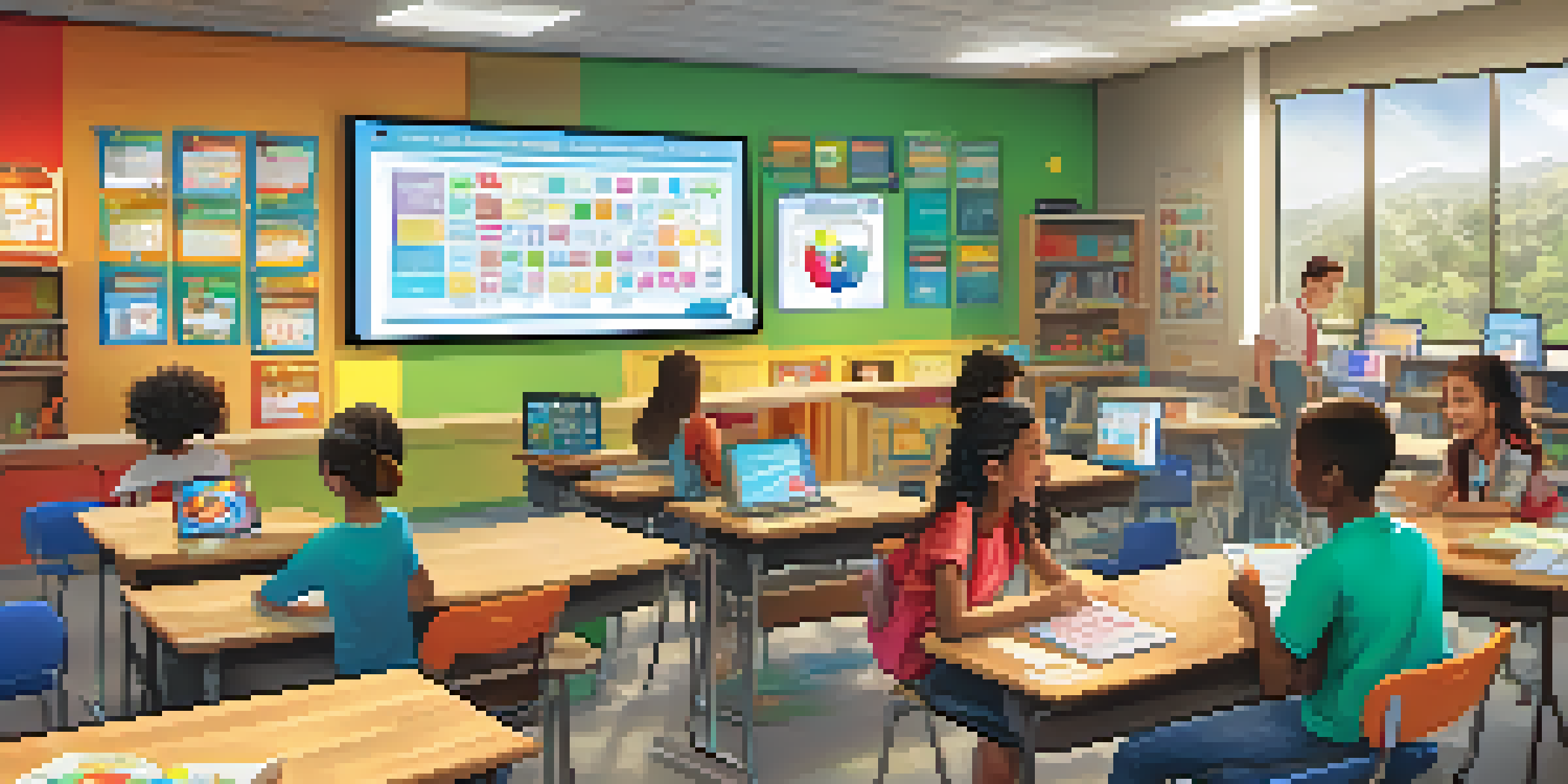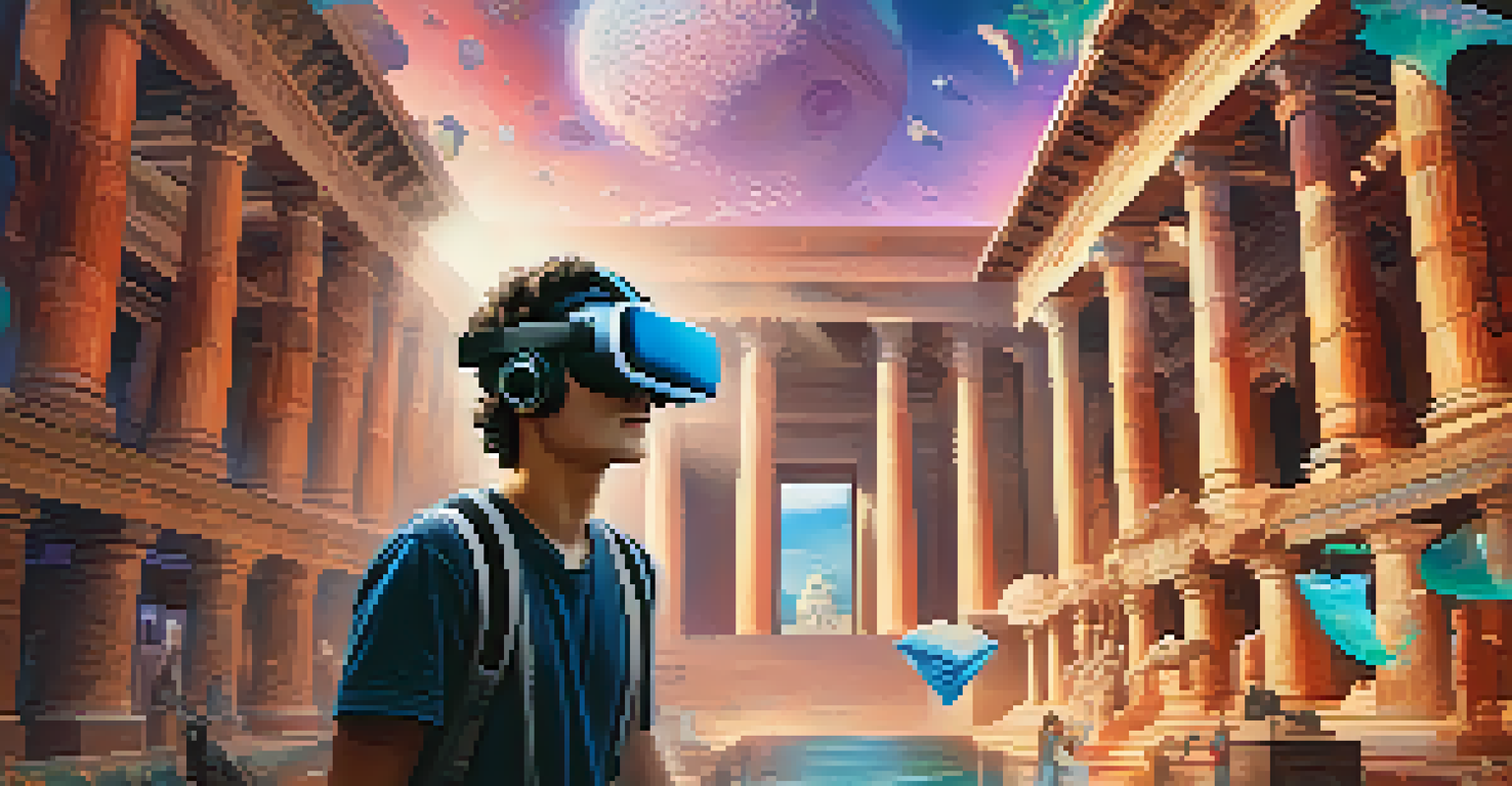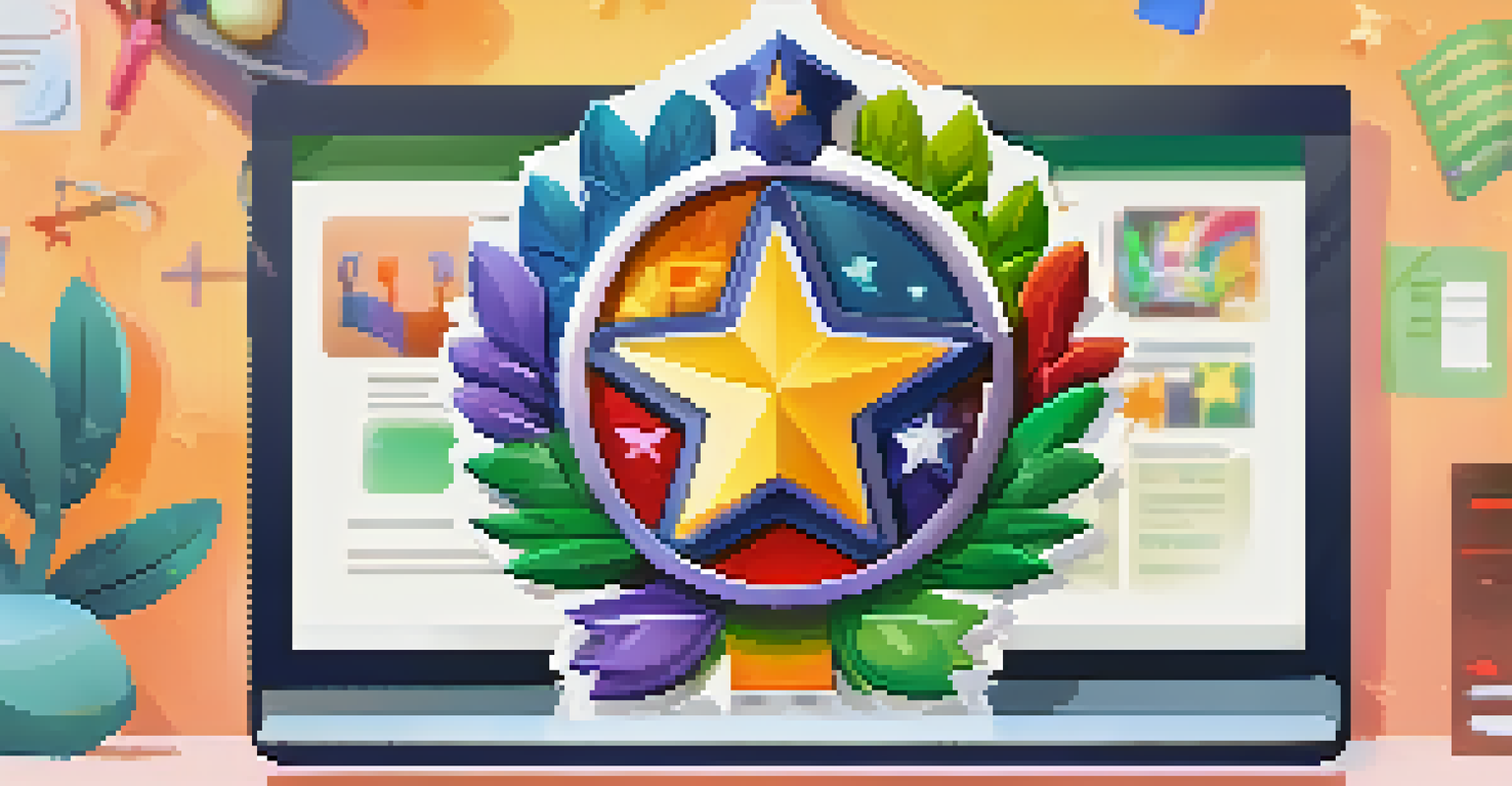Integrating Gamification in Personalized Learning Strategies

Understanding Gamification and Its Benefits in Education
Gamification involves applying game-like elements to non-game contexts, like education. This approach can transform traditional learning environments into engaging experiences. By incorporating points, badges, and leaderboards, students can feel motivated and rewarded for their achievements.
Games are the most elevated form of investigation.
In personalized learning, gamification offers tailored experiences that cater to individual student needs. Imagine a student who struggles with math; gamified elements can make practice more enjoyable and less daunting. This method not only enhances motivation but also fosters a sense of accomplishment.
Furthermore, gamification promotes healthy competition among peers. When students see their progress in a visual format, they’re often inspired to push their limits. This dynamic creates a more interactive and vibrant learning atmosphere.
Key Elements of Gamification in Personalized Learning
There are several essential elements that make gamification effective in personalized learning strategies. These include goals, feedback, and rewards. Clear objectives guide students on what they need to accomplish, while immediate feedback helps them understand their progress.

Rewards, such as virtual badges or points, can motivate learners to achieve their goals. For example, a student might earn a badge for completing a challenging assignment, which boosts their confidence and encourages them to tackle more difficult tasks. This system encourages persistence and enhances the learning journey.
Gamification Enhances Engagement
Incorporating game-like elements in education transforms learning into a more motivating and rewarding experience.
Additionally, incorporating storytelling can captivate students' imaginations. By embedding educational content within a narrative, learners are more likely to engage deeply with the material. This immersive experience can make even the most complex subjects feel relatable and enjoyable.
Customizing Learning Paths with Gamification
One of the most significant advantages of gamification is its ability to customize learning paths. Each student can progress at their own pace, allowing for a more personalized experience. For instance, if a student excels in certain topics, they can unlock advanced levels, keeping them challenged and engaged.
The greatest gifts you can give your children are the roots of responsibility and the wings of independence.
This tailored approach not only supports diverse learning styles but also encourages students to take ownership of their education. When learners see their progress and achievements, they are more likely to stay motivated and continue their journey. This empowerment is crucial for fostering a lifelong love of learning.
Moreover, teachers can track students' progress through gamified systems, allowing them to identify areas that might need additional support. This data-driven insight helps educators adapt their teaching strategies, ensuring that each student receives the guidance they need to thrive.
Incorporating Technology for Gamified Learning Experiences
Technology plays a pivotal role in integrating gamification into personalized learning strategies. Platforms like learning management systems (LMS) allow educators to create interactive, gamified content easily. Students can access lessons, quizzes, and challenges in a digital format that feels exciting and engaging.
Mobile applications also enhance accessibility, enabling students to learn on-the-go. Imagine a student practicing math problems while waiting for a bus; gamified apps can turn idle time into productive learning moments. This flexibility caters to today’s learners who thrive on convenience.
Personalized Learning Paths
Gamification allows students to progress at their own pace, fostering ownership of their education and catering to diverse learning styles.
Furthermore, virtual reality (VR) and augmented reality (AR) are emerging as powerful tools in gamified education. By immersing students in interactive environments, these technologies can make learning feel more realistic and impactful. For example, a history lesson could take students on a virtual tour of ancient civilizations, bringing the subject to life.
Challenges of Implementing Gamification in Learning
While gamification offers numerous benefits, there are challenges in its implementation that educators must address. One of the primary concerns is the potential for overemphasis on rewards, which can lead to a 'gaming' mindset. Students might focus solely on earning badges instead of genuinely understanding the content.
Additionally, not all students respond positively to gamified elements. Some may feel overwhelmed by competition or distracted by game mechanics. It’s crucial for educators to balance gamification with traditional teaching methods, ensuring that all students feel included and supported.
Lastly, integrating technology can present logistical challenges, such as ensuring equitable access for all students. Schools need to invest in the right tools and training for educators to effectively implement gamification. Addressing these challenges is vital for creating a successful and inclusive learning environment.
Measuring the Impact of Gamification on Learning Outcomes
To truly understand the effectiveness of gamification, it’s essential to measure its impact on learning outcomes. Educators can utilize assessments, surveys, and analytics to gather data on student engagement and performance. By analyzing this information, they can identify trends and areas for improvement.
For example, if students show significant improvement in test scores after gamified lessons, it’s a clear indicator that the approach is working. Conversely, if engagement levels drop, it might signal the need for adjustments in the gamification strategy. Continuous evaluation ensures that the learning experience remains dynamic and effective.
Technology Drives Gamified Learning
Utilizing technology like learning management systems and mobile applications enhances accessibility and makes learning more interactive.
Moreover, involving students in feedback loops can provide valuable insights. When learners share their perspectives on gamified elements, educators can refine their approaches to better meet individual needs. This collaborative process fosters an environment where students feel heard and valued.
The Future of Gamification in Personalized Learning
As education continues to evolve, the future of gamification in personalized learning looks promising. With advancements in technology, we can expect even more innovative approaches to integrating game mechanics into educational settings. This evolution may lead to more immersive and engaging learning experiences.
Moreover, as educators become more familiar with gamification, we’ll likely see a broader acceptance of its benefits. Schools and institutions may invest in professional development to equip teachers with the skills needed to implement these strategies effectively. This shift could transform the educational landscape for the better.

Finally, the ongoing research into gamification’s impact on learning will pave the way for best practices. By sharing successful case studies and strategies, educators can collaborate and continue to enhance personalized learning experiences for all students. The journey towards a more engaging and effective educational system is just beginning.